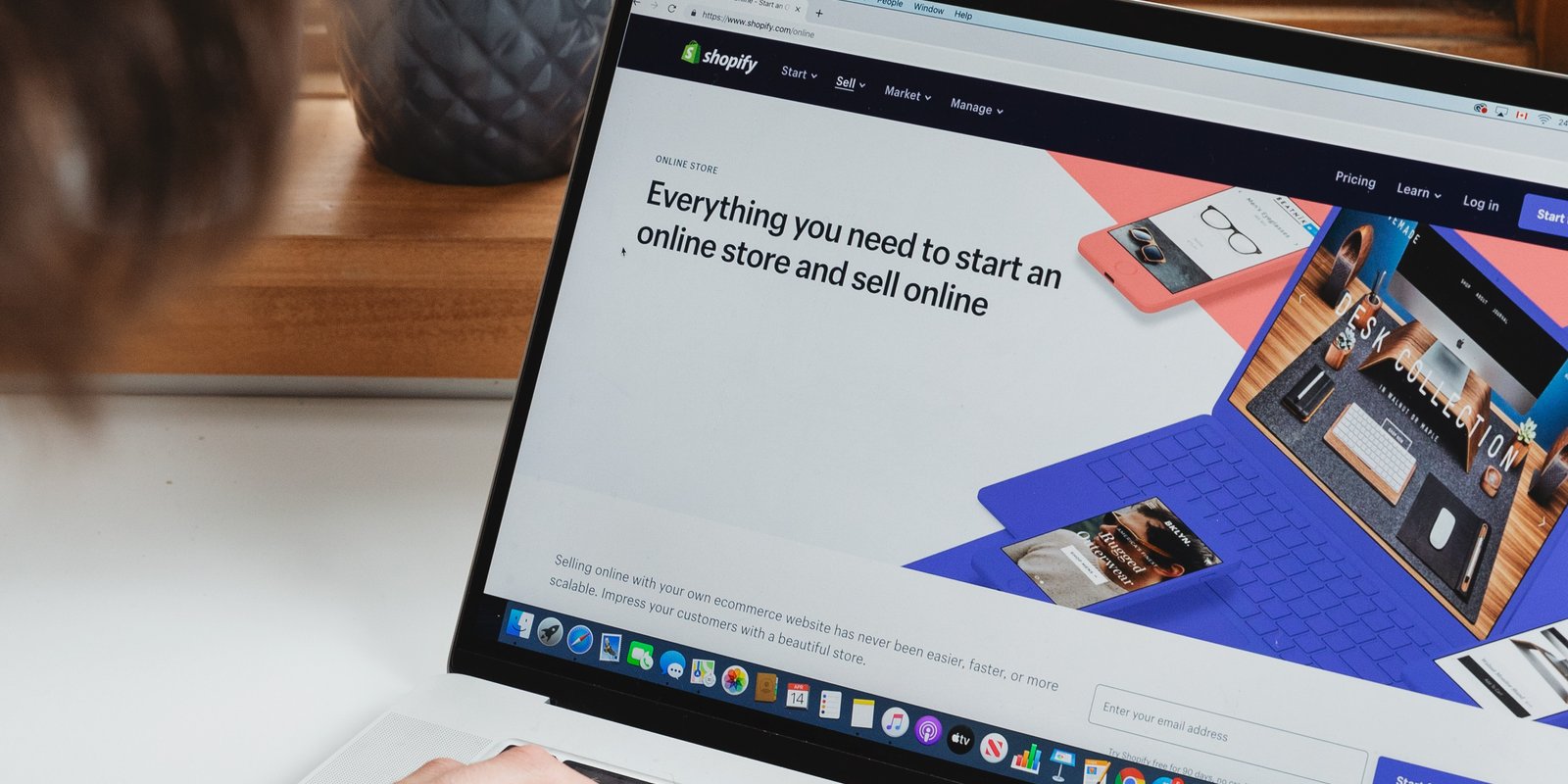Sell Your Products Or Services Online
So you want to sell stuff online? There are loads of ways to do it these days. You can stick products on your website, use an eCommerce platform, use Amazon, or even flog things on your own TikTok shop. You’ve got so many bloody options, but what is the best way?
As you'd expect, it's not one size fits all. Your marketing budget, your business priorities, and how well known you already are all play a massive part in what works best.

Why Does Marketing Budget Matter?
Let's be honest here. eCommerce is absolutely brutal. You're going up against 100 different marketplaces and massive players in every industry. When you're competing with these beasts you need to have a marketing budget behind you for advertising spend, and often it needs a large one to compete.
If you haven't got the same budget as the big boys, we need to think smart about how we structure your website and find other ways to get people visiting. There are loads of ways to build up website traffic for eCommerce, depending on your budget and who you're trying to reach.
- Google Ads - Sponsored links shown at the top of Google when someone searches for a product. The aim is to appear first for what you sell, especially when people are ready to buy. It's expensive, but it works.
- Meta Ads - Perfect for impulse buys. These work best when you're showing a clear offer or deal, and often need multiple versions to see what gets the most qualified clickthroughs.
- TikTok Ads - Ideal for showing how your products work. Whether it's skincare, cleaning products, or food and drink, TikTok is a great platform to show what your products do.
- Pinterest Ads - Great for home, fashion, beauty, and lifestyle brands. These ads blend into people's inspiration boards and are brilliant for getting early exposure.
- SEO - Improving your website so you appear higher in Google when people search for your type of product or business. This involves blog content, fast site speeds, and clean page structures.
- Influencer Marketing - Partnering with people who have large followings on social media to get them talking about your products.
- Television Advertising - Used mostly by larger companies, if you've got a big budget and a high-demand product, it can work well for getting mass attention.
- Organic Social Media - Posting regularly on your own social channels to stay visible, show personality, and build a community of loyal customers.
- Affiliate Marketing - Letting others promote your products in return for a cut of each sale. Low risk and can scale fast as you only pay when orders come in.
- Experience Marketing - A low-cost method that works especially well for food, drink, cosmetics, or homeware. Set up a stall at a market or event, give out samples, and turn passers-by into paying customers.
Search Engine Optimisation (SEO)
What is Important in an eCommerce Store?
Website Speed
We've all been ready to buy something, but the website takes forever to load. What happens next? We bugger off and find somewhere else. That's exactly why website speed is so important in eCommerce. Your customers expect a fast website, and fast websites are what we specialise in.
We've seen great success with Steel Suppliers, taking their maximum load time from 12.6s to 3.2s, resulting in a 2,056% increase in monthly orders, a 1,023% rise in revenue, and more than double the conversion rate.
When you're spending money on digital ads, the best way to improve your Return On Ad Spend is to speed up your website. More people can arrive, find what they need, and complete their order.
Mobile Responsiveness
54% of website traffic comes from mobile, so your website needs to work properly on all devices, no matter how small they are. We design from the smallest device on the market (the iPhone SE) all the way up to ultrawide monitors. Our websites understand the width of your screen and adapt to serve it correctly.
This is what we call a "responsive website" because the website responds even if you resize your window or zoom in.
Easy To Use
You should easily be able to find products, browse them, add them to your cart and checkout. Lowering the friction wherever you can is absolutely crucial. Your customers won't waste time wallowing around your website to find what they want, so we need to make it easy to use.
This is all in the user experience, making a website enjoyable and fun to use for your customers.
Strong Design
Your website needs to pop and engage your customers, especially when they've come from a digital ad. The design needs to align with your branding, so that no matter where people find you, everything feels the same.
This is why we design all of our eCommerce sites with the help of your existing branding, so it all fits together properly.
Why Does Trust and Reputation Matter?
Repeat Customers Help Businesses Grow
Everybody has a product they'll only buy from one brand, and it becomes very easy to generate more and more sales by marketing to these customers in specific ways. That could be offering loyalty discounts, sending marketing materials like emails and text messages, or using digital ads to target them on platforms like Facebook and Instagram.
If you already have a strong base of customers, you might not need to put as much into your marketing budget, instead using more organic marketing channels.
Reputation is Everything.
88% of users won't return to a website after a bad experience, let that one sink in. This is how competitive everything is now, particularly eCommerce. Your brand needs to be kept in high regard, otherwise you will see your sales start to drop.
This ties into every point, speed, ease of use, marketing and PR. If any of these drop off, you will struggle to make sales online.
Trust is More and More Important
A lot of people don't like buying from websites they don't know. They need to build trust and that's all in the development. Everything needs to look modern and professional, and then people will be comfortable inputting payment information
Most people turn to Amazon, knowing they'll keep payment information safe, that orders will arrive, and on the off chance that they don't, a refund can be issued. This means we need your website to look trustworthy and professional from the off. No broken text or links, strong reviews and secure payment gateways.
How we do eCommerce
Right, let's sell your stuff online. How do we do it? We've got a few different ways to get your setup, depending on the number of products you've got, and what you need from your website. We can work monthly for smaller stores, but for larger stores we work with lump sum payments.
Our Growth Package
For smaller eCommerce stores, we can power everything within a custom coded website using Snipcart. This gives businesses starting out in eCommerce a great chance to have a high-performance website which loads quickly, and doesn't cost anything upfront.
This setup is perfect when you've got a focused range of products. Take Wagyu Republic and Oxfordshire Logs - both have a small selection they want to sell directly from their own website, and it works a treat.
It's also brilliant for businesses like Salters Steamers. They mainly promote their services but also sell gift cards online. They get the best of both worlds, they keep their website speed and have a great customer experience for buying gift cards.
Custom Shopify Theme
Need to sell loads of products? Shopify's your best friend.
Shopify makes selling multiple products very easy. We build custom themes and only load the plugins you actually need, so you get the fastest possible setup without all the bloat that usually comes with eCommerce stores.
We've built stores for Benji Sleep, Steel Suppliers, and Rac N Roll, and they're all flying. The beauty of Shopify is you can log in and tinker about yourself whenever you fancy, and if you can't be bothered? Just give us a shout and we'll sort it on an hourly rate.
Headless Shopify Store
Sometimes Shopify gets a bit sluggish, and if you want the absolute fastest eCommerce store possible, headless is what you need
A headless store means we have a separate backend and frontend. The backend is where all of the products and information is stored, which is the part that often makes websites slow, and the frontend is the bit your customers interact with.
With a headless website, we connect the backend to the frontend using application programming interfaces (APIs), this means we can achieve rapid speeds by using our own, lightning-fast tech stack.
